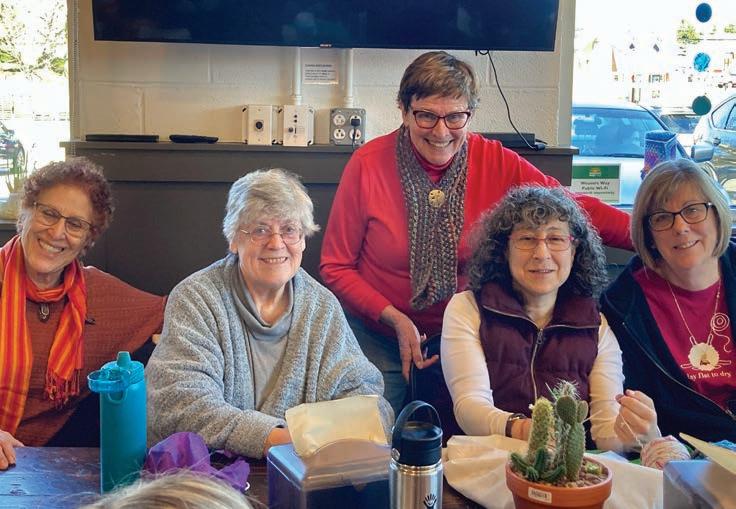
2 minute read
First Earth Day Lessons and a Sustainable Pasta Hack


by Betsy Teutsch, for
the Shuttle
The first earth day happened When i Was a senior in high school. Suddenly the word “environment” entered the mainstream. Sen. Gaylord Nelson, of nearby Wisconsin (I grew up in Fargo, ND) managed to organize events all over the country. Remarkably, 20 million people participated in teach-ins, rallies and demonstrations. The main takeaways were to decrease pollution and waste less. Congress was convinced to create the Environmental Protection Agency to regulate polluters. (Unfortunately, waste is built into capitalism, and we haven’t yet managed to regulate that).
A few specific Earth Day suggestions have stuck with me, such as ditching disposable grocery bags. I didn’t have much chance to put that into practice, since I was going off to college, but I was excited to see people taking their string bags to the Shuk (the outdoor markets) while I was studying in Israel in 1972. When rolled up, these colorful bags fit in a pocket. Israel was a lowincome country then, and people were frugal with resources. Weavers Way clearly practiced this idea from its launch, just a couple years after that first Earth Day
Another recommendation that became a lifelong habit was to turn off the oven for the last few minutes of baking. Back then, no one was thinking about global warming or carbon footprints, but there was a nascent understanding that our country had become profligate and had squandered our natural resources. This was an easy way to conserve.
Fifty-three years later, here we are on the brink of ecological disaster. We are, hopefully, at the early stages of a complete transition to a renewable energy infrastructure. But there are still countless ways to consume fewer resources in our daily lives, including kitchen hacks that shrink carbon “cookprints.”
Recently, Barilla pasta promoted a surprisingly energy efficient way to cook pasta using far less fuel:
1. Add the noodles to boiling water, boil for two minutes, and turn off the heat.
2. Cover the pot and leave the pasta in the water, letting the retained heat complete the cooking of the noodles. This sounded heretical to me. Every instruction for pasta cooking I’ve ever seen says to cook it in an open pot of boiling water for the whole time. It has always bothered me to have that open pot boiling, since it’s so inefficient. All that steam heating the room is basically wasted energy.
But readers, it works! I tested it when making my 172nd box of Annie’s mac and cheese for our grandsons. This approach lowers the cookprint emissions by 80% — not too shabby.
Co-op member Amy J. Cohen tested passive cooking with gluten-free noodles for this article. She boiled them for five minutes, instead of the 15 directed on the box, then left them in the pot for 10 minutes with the burner off and the lid on tight. She reported that “it worked out perfectly.”
Asking friends if they’d ever tried this method turned up another revelation. Anna Goldberg, Naomi Hirsch and Adina Silverstein all swear by passive cooking for hard-cooked eggs. The eggs go into a pot of room temperature water, which is then brought to a boil. Cover the pot and leave the eggs for 10-12 minutes. Voila! Perfectly hard boiled.
Robin Smolar Minkoff said she uses the same technique with polenta or grits “with delicious results.” A friend from Oregon, Julie Hankin, uses it to cook her oatmeal.
The original teacher of this passive pasta cooking technique is Kate Heyhoe, author of “Cooking Green: Reducing your Carbon Footprint in the Kitchen.” Her book is a science-based analysis of the most efficient ways to cook. Think about it: It’s far more direct to heat one pot on a burner than to heat a whole oven. Microwaving is more efficient than oven cooking, too. Cutting food into smaller pieces reduces cooking time.
These small tweaks might sound trivial, but collectively they can make a significant difference, one Annie’s mac and cheese at a time.
Let me know how passive cooking works for youbpteutsch@comcast.net.







